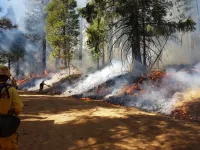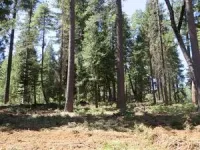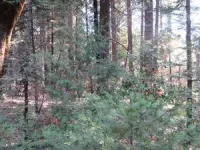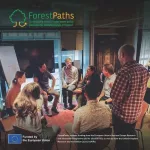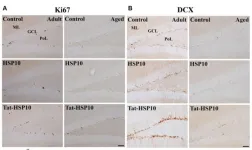(Press-News.org) Berkeley — A 20-year experiment in the Sierra Nevada confirms that different forest management techniques — prescribed burning, restoration thinning or a combination of both — are effective at reducing the risk of catastrophic wildfire in California.
These treatments also improve forest health, making trees more resilient to stressors like drought and bark beetles, and they do not negatively impact plant or wildlife biodiversity within individual tree stands, the research found. The findings of the experiment, called the Fire Surrogate Study, were published today in the journal Ecological Applications.
“The research is pretty darn clear that these treatments are effective — very effective,” said study lead author Scott Stephens, a professor of fire science at the University of California, Berkeley. “I hope this lets people know that there is great hope in doing these treatments at scale, without any negative consequences.”
Last year, California announced a strategic plan for expanding the use of prescribed fire to 400,000 acres annually by 2025. However, the use of beneficial fire continues to be hindered by multiple factors, including the lack of a trained workforce, the need for specific weather conditions for burning, and fears about potential risks.
This study shows that restoration thinning is also a viable option for forest management and can be used in tandem with beneficial fire without harming forest health or biodiversity.
“Our findings show that there's not just one solution — there are multiple things that you can do to impact the risk of catastrophic fire,” said study co-author Ariel Roughton, research station manager at Berkeley Forests. “Folks can choose from different combinations of treatments that might fit their needs, and we can show them how those treatments might impact things like wildfire behavior, tree growth and carbon holding in their forests.”
Surrogates to wildfire
Over the past two decades, Stephens and other researchers at Berkeley Forests have used prescribed burning, restoration thinning or a combination of both to treat plots of land at Blodgett Forest Research Station, a 4,000-acre experimental forest located about 65 miles northeast of Sacramento on the unceded lands of the Nisenan peoples.
The Fire Surrogate Study was one of 13 studies across the U.S. first launched in 1999 with funding from the U.S. Joint Fire Science Program. Its aim was to study whether the two treatments could mimic the beneficial impacts of lightning fires and Indigenous burning practices on California’s forests, which have become dense and overgrown after a century of logging and fire suppression.
“Prescribed fire and restoration thinning are both surrogates for wildfire, a key process that happened frequently in California before European colonization,” Stephens said. “The impetus of this study was: If you're going to implement these treatments at a large scale, is there anything that's going to be lost?”
The study created nine experimental plots and three control plots at Blodgett. Three of the experimental plots were managed only using prescribed burns; three burns occurred over the course of 20 years. Three other experimental plots were first thinned and then burned, and the final three were treated only with restoration thinning. The control plots were left to grow without human interference except continued fire suppression.
At the end of the 20-year period, the researchers surveyed the vegetation in each plot and used computational modeling to estimate how many trees were likely to survive wildfire. They found that all three types of experimental plots were significantly more resilient to wildfire than the control plots, showing an 80% likelihood that at least 80% of trees would survive.
They also calculated the “index of competition,” a measure of how strongly trees must compete for resources like sunlight, water and soil nutrients. By removing excess trees and vegetation, thinning and burning both limited the amount of competition between trees, making them less vulnerable to stressors, like drought and bark beetles.
However, the plots that were treated with a combination of thinning and fire had the best index of competition, suggesting that they would be the most resilient to the impacts of climate change.
“When you combine thinning with fire, you're able to modify all different levels of the forest structure, and it speeds up the timeline for achieving a more resilient structure,” Roughton said.
Restoration thinning can also provide financial benefits: Often, larger trees can be sold to sawmills, and the proceeds can be used to help offset the cost of forest management. Over the course of 20 years, the treatments at Blodgett were entirely paid for by revenue from timber.
“When I go to Sacramento and talk about [forest management] with legislators, the first question they always ask is about cost,” Stephens said. “People in the state government are telling us that they can't be the sole source support for this work. That's why the economics are so important.”
Trial by fire
In September 2022, the forests at Blodgett were subjected to a real-life test: On the morning of Sept. 9, 2022, the Mosquito Fire breached the north side of the property, burning approximately 300 acres before it was contained two days later.
One of the study’s control plots was located directly in the path of the blaze, and more than 60% of the trees in this plot were completely scorched. However, neighboring experimental plots that had been treated with prescribed burns served as “fuel breaks,” burning less hot than the control and acting as staging areas for firefighters.
“We think that, overall, our management actions, coupled with the weather, did have a pretty big impact on the behavior of the fire,” Roughton said.
The researchers have received a four-year grant from the Joint Fire Science Program to continue the Fire Surrogate Project. With the help of the grant, they have established a new control plot to replace the one that burned and plan to apply a fourth fire to the experimental burn-only plots.
They are also collaborating with the United Auburn Indian Community to reestablish Indigenous cultural burning at Blodgett.
“We want to be part of the solution, and that’s part of our mission at Blodgett,” Roughton said. “We hope that by doing these studies and bringing folks here to see the effects of the different treatments, they will take that back and apply it to the land that they're going to be managing.”
Additional co-authors of the study include Daniel E. Foster, John J. Battles, Alexis A. Bernal, Brandon M. Collins, Rachelle Hedges and Robert A. York of UC Berkeley and Jason J. Moghaddas of the Spatial Informatics Group. This project was originally funded by the U.S. Joint Fire Science Program, and it has received additional support from the California Fourth Climate Change Assessment, the McIntire-Stennis Program, the California Greenhouse Gas Reduction Fund, and the UC Office of the President’s UC Laboratory Fees Research Program. Smart Practices and Architecture for Prescribed Fires in California was also important to keeping this long-term project active.
END
Twenty-year study confirms California forests are healthier when burned — or thinned
UC Berkeley researchers found that prescribed burning and restoration thinning can reduce wildfire risk and boost a forest’s resilience to climate change, and using any combination of these treatments is far better than doing nothing.
2023-12-13
ELSE PRESS RELEASES FROM THIS DATE:
Caregiving can be stressful, but it could also lower risk of depression
2023-12-12
Becoming a caregiver to an aging parent or spouse can be stressful, but a new study from a researcher at The University of Texas at Austin is questioning the idea that family caregiving is also a risk factor for depression.
The study, published in the journal Advances in Life Course Research, found that depression in adult caregivers is mostly driven by having a loved one experiencing serious health problems, while becoming a caregiver is associated with fewer symptoms of depression.
“Decades of research on this topic indicate that there are positive and negative aspects to being a caregiver,” said Sae Hwang Han, ...
UCF researcher discovers new technique for photon detection
2023-12-12
University of Central Florida researcher Debashis Chanda, a professor at the NanoScience Technology Center, has developed a new technique to detect photons — elementary particles that span from visible light to radio frequencies and are instrumental in carrying cellular communication.
The advancement could lead to more precise and efficient technologies in various fields, from improving medical imaging and communication systems to enhancing scientific research and even potentially bolstering security measures.
Photon detection has typically relied on change/modulation of voltage or ...
Fat flies live longer on a diet at any age
2023-12-12
Old, obese flies get healthier and live longer if put on a diet, University of Connecticut researchers report on Dec. 8 in PNAS. If the effect holds true for humans, it would mean it’s never too late for obese people to improve their health with diet.
For way too many of us, eating too much goes along with getting old and a tendency to be obese. Different health organizations define obesity differently, but all agree it means having too much body fat, and is associated with a host of diseases related to metabolism including heart disease and diabetes. Many animal studies have shown that eating less—meaning sharply ...
European Policy Lab gathers stakeholders to map forest policy opportunities and barriers
2023-12-12
ForestPaths’ first Policy Lab convened stakeholders in Helsinki, Finland, on 27-29 September 2023. Nineteen carefully selected participants with diverse expertise – including research, policy, governance, civil society, value chain professionals, and forestry practitioners – engaged in discussions on forest-based policymaking and modelling related to climate change and biodiversity.
Tasked with considering policy actions given different timescales, governance paradigms, enablers, and barriers, participants contributed ...
Tat-heat shock protein 10 ameliorates age-related phenotypes in the hippocampus
2023-12-12
“Mitochondrial dysfunction is a major cellular change observed in the hippocampus during aging.”
BUFFALO, NY- December 12, 2023 – A new research paper was published in Aging (listed by MEDLINE/PubMed as "Aging (Albany NY)" and "Aging-US" by Web of Science) Volume 15, Issue 22, entitled, “Tat-heat shock protein 10 ameliorates age-related phenotypes by facilitating neuronal plasticity and reducing age-related genes in the hippocampus.”
In this new study, researchers Hyo Young Jung, Hyun Jung Kwon, Kyu ...
MIT researchers observe a hallmark quantum behavior in bouncing droplets
2023-12-12
In our everyday classical world, what you see is what you get. A ball is just a ball, and when lobbed through the air, its trajectory is straightforward and clear. But if that ball were shrunk to the size of an atom or smaller, its behavior would shift into a quantum, fuzzy reality. The ball would exist as not just a physical particle but also a wave of possible particle states. And this wave-particle duality can give rise to some weird and sneaky phenomena.
One of the stranger prospects comes from a thought experiment known as the “quantum bomb tester.” The experiment proposes that a quantum particle, such ...
Smoking causes brain shrinkage
2023-12-12
Smoking shrinks the brain, according to a study by researchers at Washington University School of Medicine in St. Louis. The good news is that quitting smoking prevents further loss of brain tissue — but still, stopping smoking doesn’t restore the brain to its original size. Since people’s brains naturally lose volume with age, smoking effectively causes the brain to age prematurely, the researchers said.
The findings, published in Biological Psychiatry: Global Open Science, help explain why smokers are at high risk of age-related cognitive decline and Alzheimer’s disease.
“Up until recently, scientists have overlooked ...
Mammogram rates increase when patients schedule themselves
2023-12-12
PHILADELPHIA— Having the ability to self-schedule mammograms was associated with a 15 percentage point increase following through with getting the screening, according to research from the Perelman School of Medicine at the University of Pennsylvania. The paper was published today in the American Journal of Preventive Medicine.
“Self-scheduling helps make the path to mammogram completion a little smoother, where you don’t have to find the time to call a scheduling line, wait on hold, or go back and forth trying to find an appointment that works for your schedule,” said the study’s lead author, Kimberly Waddell, ...
Protein study could one day advance Parkinson’s, breast cancer care
2023-12-12
PORTLAND, Oregon -- New research from Oregon Health & Science University could one day lead to therapies that prevent or treat diseases and infections tied to a protein that’s found in all human cells.
A study published today in the journal Molecular Cell describes how the protein ubiquitin is modified during a bacterial infection. The study details the steps taken to create a form of the protein known as lysine 6 polyubiquitin, where a long chain of ubiquitin molecules are linked through ...
Study exposes opportunities for strengthening cancer drugs trials in China
2023-12-12
More than one-eighth of the randomized trials of cancer drugs seeking regulatory approval in China in recent years used inappropriate controls to test the effectiveness and safety of the drugs, according to a new study published December 12th in the open access journal PLOS Medicine by Professor Xiaodong Guan of Peking University, China, and colleagues.
In randomized trials, patients are assigned to either a control arm, in which they receive the current optimal treatment, or an experimental arm, in which they receive the new drug being tested. However, studies have previously ...
LAST 30 PRESS RELEASES:
Auburn Physics PhD student earns prestigious DOE Fellowship
AI tool helps you learn how autistic communication works
To show LGBTQ+ support, look beyond Pride Month
Using artificial intelligence to understand how emotions are formed
Exposure to wildfire smoke late in pregnancy may raise autism risk in children
Breaking barriers in lymphatic imaging: Rice’s SynthX Center leads up to $18 million effort for ‘unprecedented resolution and safety’
Dhaval Jadav joins the SETI Institute Board to help spearhead novel science and technology approaches in the search for extraterrestrial life
Political writing retains an important and complex role in the national conversation, new book shows
Weill Cornell Medicine receives funding to develop diagnostic toolbox for lymphatic disease
It started with a cat: How 100 years of quantum weirdness powers today’s tech
McGill researchers identify a range of unexpected chemical contaminants in human milk
Physical therapy research highlights arthritis’ toll on the workforce — and the path forward
Biomedical and life science articles by female researchers spend longer under review
Forgetting in infants can be prevented in mice by blocking their brain’s immune cells
Blocking immune cells in the brain can prevent infant forgetting
AI-driven ultrafast spectrometer-on-a-chip: A revolution in real-time sensing
World enters “era of global water bankruptcy”; UN scientists formally define new post-crisis reality for billions
Innovations in spatial imaging could unlock higher wheat yields
A twitch in time? Quantum collapse models hint at tiny time fluctuations
Community water fluoridation not linked to lower birth weight, large US study finds
Stanford University’s Guosong Hong announced as inaugural recipient of the SPIE Biophotonics Discovery’s Impact of the Year Award
Ice, ice, maybe: There’s always a thin layer of water on ice — or is there?
Machine learning lends a helping ‘hand’ to prosthetics
Noninvasive brain scanning could send signals to paralyzed limbs
Community water fluoridation and birth outcomes
SGLT2 inhibitors vs GLP-1 receptor agonists for kidney outcomes in individuals with type 2 diabetes
Long-term exposure to air pollution and risk and prognosis of motor neuron disease
Five-year absolute risk–based and age-based breast cancer screening in the US
Study finds elevated alcohol involvement in suicides of lesbian, gay and bisexual women
Air pollution may increase the risk of the neurodegenerative disease ALS
[Press-News.org] Twenty-year study confirms California forests are healthier when burned — or thinnedUC Berkeley researchers found that prescribed burning and restoration thinning can reduce wildfire risk and boost a forest’s resilience to climate change, and using any combination of these treatments is far better than doing nothing.
